The city-council agenda-session heard a couple of fine reports on matching grants for stream restoration in Fayetteville park areas, which would require use of a part of the money set aside three years ago or so for restoration of Red Oak Park in Ward 4. She asked what happened to the promised work on Red Oak Park that was going to be overseen by the Game and Fish Commission stream team restoration expert, Dave Evans.
Park officials explained that he had been ill for some part of the past two years and was unavailable and thus the project had not gone forward.
Strangely, the three trips that Dave Evans made to north Fayetteville's Kitty Creek neighborhood included a chance for me to ask him in December and again in the spring of this year what happened to the Red Oak Park project, and he told me that he hadn't heard anything about the city being ready to proceed with it.
Evans was disgusted withe the dredging of Kitty Creek, which was the previous administration's solution to the threat of flooding of the low-lying neighborhood. It was the opposite of a stream-restoration project. And now the park department is talking about getting part of the cost-share from the Engineering Department to do a piping system to take water north (downstream) and maybe protect a few of the park's mature trees.
If the Corps of Engineers approves the city park and engineering departments' pipe plan, this will result in a lot of digging that could easily damage the park more than it would help. Piping surface water is no longer a method of choice in such matters. A pipe could take the water downstream and avoid the park and even prevent erosion of the northern neighbor's property, but the pipe would end somewhere. At that point it would have to spread the gush of water over several acres of former prairie farm and pasture land OR washout a portion of the main Hamestring Creek, a significant tributary of the Illinois River.
I suggested from the first time I heard about the Red Oak Park problem and saw a video of it and a description of its condition before upstream (to the south) prairie plateau land was developed that rain gardens be developed with the cooperation of property owners upstream and that curbs and gutters that caused the damage to the park be reworked in a few areas to eliminate flow down the streets and stormdrains to the park.
But the neighbors wanted quick action and none apparently learned enough about the several ways to restrain and even utilize rain water upstream to demand that solution.
By this time, the neighborhood could have been taught how a natural system would work and the raingardens could have been created in open space in the Southeast flat, open area of the park and in many yards. Some would have chosen cisterns and rain barrels where space with absorbent soil wasn't available and most of the flash-flood threat could have already been eliminated.
Obviously, it is not too late for that option, because nothing has been done.
Another interesting point made during the discussion was that certain money dedicated to the parks can be used for "promotion." The Government Channel does a great deal of promotion of the city parks. It would seem, then, that the park department could provide some of that money to bolster the Government Channel's budget during this trying economic time, even though they can use it for restoration of Red Oak Park!
Red Oak Park photos on FlickrView Larger MapPlease see links of interest at right for Red Oak Park photos and rain-garden brochures.
.JPG)


PLEASE CLICK ON PHOTO TO ENLARGE.
The first photo I posted (bottom photo) was a view from the street south of the park showing the south end of the park. From that spot I heard water loudly pouring from the storm-drain outlets that drop water into the park. The Night Shot function of my camera and my built-in flash don't work at a significant distance. And, without someone to on hand to rescue me, I didn't choose to got down into the gully for better pictures of water leaving the storm sewer from the upstream subdivisions.
The middle photo shows a small flow after several bursts of heavy rain had ended.
The top photo shows the upstream (south opening) of the pipe that carries water under New Bridge, which is near the north end of the Red Oak Park. This spot must become a big pond for a brief time when a really heavy, extended period of rain occurs.
The WARD FOUR meeting between 7 and 8:30 p.m. Monday Feb. 11, 2008, got something accomplished. The relatively small group of people who attended — during a significant thunderstorm with the threat of ice to follow — agreed (mostly quietly) that the two City Council members representing Ward Four — Councilwoman SHIRLEY LUCAS and Alderman LIONELD JORDAN — should go ahead and bring up to the full council a Red Oak Park plan that would include allowing the Game and Fish plan prepared by Dave Evans to go forward as soon as practical for the park division of the city Department of Parks and Recreation.
Additionally, LUCAS AND JORDAN agreed that the plan should go forward with a plan to continue to provide information about the value of rain gardens to residents of the surrounding subdivisions and make an effort to bring about the creation of enough new areas where water is encouraged to soak in upstream (to the south) that the speed and amount of water rapidly reaching the park during heavy rain would no longer create a dangerous flash flood in the park.
My plan would be the same but in the opposite order — save the money and keep the removal of trees and widening of the streambed until the rain-garden plan is executed. Then we will know whether any or how many trees have to be removed to "save the trees."
But I would have voted for the combined plan if I lived in the neighborhood (and got to vote) and used that park. And especially if I lived downstream and was watching my land be covered by debris and gravel every time the stream flow is heavy.
Widening the channel and trying to force the stream to meander will help. However, the land is so steep that it would take pretty big reservoirs in the flow area rather than a batch of boulders and small channel changes to make a real difference. Dave Evans' Stream Team plan works great where there is enough space to create WIDE meanders and where the drop in the stream is relatively gradual. And it will work fine during light rain such as we had last night (Monday evening during and after the meeting).
One has to remember, however, that piling rocks in the Arkansas River, White River, Red River and Mississippi River to redirect the flow is a specialty of the U.S. Army Corps of Engineers. And the corps frequently has to redo that activity in those big rivers.
The stream through Red Oak Park is different in several ways. It is dry 99 percent of the time. If you don't go there early this morning you may not find even a small flow. At this minute, 2:07 a.m. Tuesday, there is probably a lot more flow than when I visited at about 9 p.m. Monday. Precipitation, frozen and wet, continues to fall where I live in south Fayetteville.
Also, the stream at Red Oak Park is narrow, and it is extremely steep and the bedrock is exposed for the full length of the park because of the past few years of erosion. As in the case of snowfall and other matters of major significance to human beings and Mother Nature, one can't predict how much satisfaction will come from this renovation project or how long its effects will last.
We may not have enough extended periods of heavy rain in 2008 to create flashfloods that would continue the damaging erosion of the park. Everyone knows that 2004 was the year that most streambed erosion occurred everywhere in the area. Multi-inch rains of up to 6 inches in far less than 24 hours occurred three times in this area during 2004, once in the last week of April and twice in the first week of July. A story in the Arkansas Democrat-Gazette documented the surprise of people living in a high-dollar subdivision on the White River upstream from Beaver Lake when the lake itself rose into their ground-level rooms. Their title-companies hadn't explained at closing on their purchases of their homes that flooding of the area would be permitted any time the Corps of Engineers decided the flood gates at Beaver Dam needed to be closed to protect property in far north Arkansas and southern Missouri from White River flooding.
We may see the year that Beaver Lake gets so little rain that we'll be like Atlanta, Georgia, wondering where the reservoir went, and the rural people in the surrounding four counties will be wondering why they disconnected the pump from their old well or pond or spring and made themselves dependent on an artificial, manmade storage facility and miles of pipes. So, whatver we do now may be sufficient for some time. Maybe nothing will actually be needed for years!
However, in the four meetings (three Ward 4 meetings and one council meeting) I have attended and spoken about the problem, I have been the ONLY person who has volunteered to walk the neighborhood, knock on doors and hand out copies of a brochure on rain gardens and try to explain why they need to keep the water on their property. It has been said that people in some of the subdivisions there are concerned about saving the trees to allow the area to continue to serve as a nature park. But I haven't seen anyone express this concern since a few appeared at a council meeting months ago. If someone knows any of those people, please bring them to this Web log and let's hear it from them!
We first talked publicly about ways to keep the water where it falls to stop the flash floods nearly six months ago. A video shown a few times on Government channel showed people walking the park and discussing trying to save it long ago!
If the neighborhood representatives and property-owners' associations in the area haven't turned up a few people willing to make the effort to put in rain gardens or at least speak at the many public meetins, I don't know that I would benefit by starting to canvass the neighborhod on my own — so many problems, so little time.
I went to check the flow in the park after the meeting. I hope others did, too. There were some hard bursts of rain; but, as of 11 p.m. there had not been enough extended periods of heavy rain to create the kind of flash flood that has created the problem of major stream-bed erosion in the past.
So my photos from last night don't show a dangerous flow. If I could stay up all night and sit in my car on New Bridge Drive or Road or Street until dawn, I might get photos that would show the situation well enough to get people interested. But it may not rain any more tonight.
So, if you are one of the neighbors who has commented or at least found and read this site and maybe looked at our photos on Flickr (see list of links of interest at right for more Red Oak Park photos, please share this site and offer your comments here. Just click on the word "comments" below this post and don't hold back. Say what you think.
It it is raining hard when you wake up, please take a camera to New Bridge and photograph it yourself. I will assist you in posting your photos if you e-mail me or comment on this site that you have some. The coding is simple to copy and paste if you have photos online elsewhere.
If not, the best thing would be to email a photo or two and let me post them. I promise to do that as soon as they appear in my e-mail.
Shirley Lucas, Lioneld Jordan and the rest of the Fayetteville City Council have patiently waited for interested citizens and the park division of the Fayetteville Department of Parks and Recreation to offer a reasonable plan. If this is the best we can do, then let it go to the council and let's get to work on it.


PLEASE CLICK ON IMAGES TO ENLARGE aerial photos.
Red Oak Park is the vertical winding wooded area near the center of the aerial photos. Water flows north from the subdivisions south, east and west of the park and drops into the wooded area from two unrestricted pipes with no retention or detention pond.
Over recent decades, the powerful concentration of water that formerly soaked into the now flattened and paved over fields and pasture has washed out a few trees and created a deep channel through what used to be moist-soil, forested wetland with a gentle flow before development turned it into a raging torrent.
Completely dry for weeks on end, the new "stream" becomes deadly during heavy rain. Photos of the flash floods are unavailable because the water falls on the houses and yards and driveways and streets and runs through a far-too-efficient storm-sewer system and is gone before anyone can dare expose a camera to the elements. The evidence of the power of the water is in the debris in the streambed and caught in riparian-zone vegetation.
Although the thick understory vegetation in the south end of the park is good for nesting and roosting song birds, it is inhospitable to all but the hardiest of hikers and adventurous youngsters searching for sites to build "forts" or play Tarzan.
Elderly people, small children, the faint at heart and the physically handicapped people can't travel from one end to the other. There is a relatively large open area, however, with a smooth, handicapped-accessible paved biking, hiking or jogging trail circling it, at the southeast corner (upstream) and a small basketball court at the north end (downstream).
One proposal offered by the Arkansas Game and Fish Commission would require removing many riparian-zone trees from the new stream's banks and constructing a meandering streambed with boulders and such brought in to create deep areas where water will be slowed slightly during flash floods. But the same volume of water would pass downstream and its velocity would be decreased very little.
An alternative proposal of creating a large storm garden in a portion of the open area upstream and smaller rain gardens on private property all over the watershed would keep a lot of water out of the park by allowing it to soak in naturally. This would keep most of the trees standing in the park and would bring diverse species of beautiful native wildflowers and butterflies and song birds to space now managed by the "grow and mow" philosopy.
A special Ward 4 meeting at the Ozarks Electric Coop at 7 p.m. Monday, Feb. 11, 2008, is to discuss ways to stop the erosion, protect the timber and generally make the park safer and more usable for man and beast — especially for children and wildlife.
For information or to offer suggestions, call Jim Bemis at 479-444-9825 or Aubrey Shepherd at 479-444-6072.
More photos of the park will posting daily between Feb. 1 and Feb. 11. Please offer comments on this Web log and plan to attend the meeting.
Center for Watershed Protection free download of stream-protection brochures
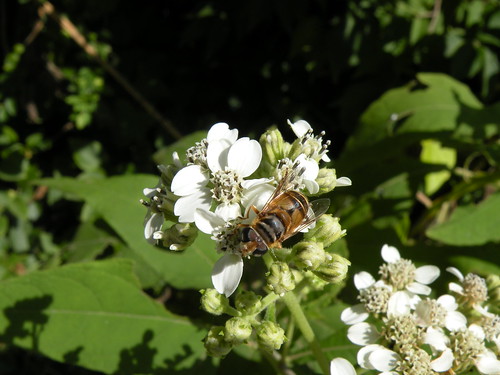
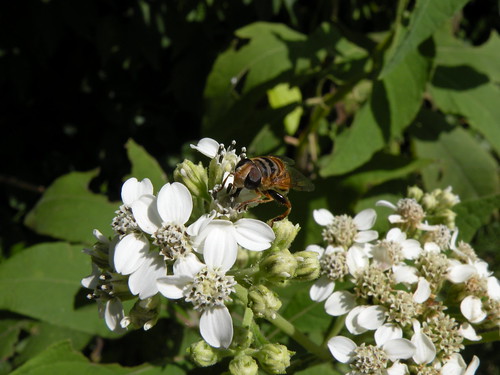
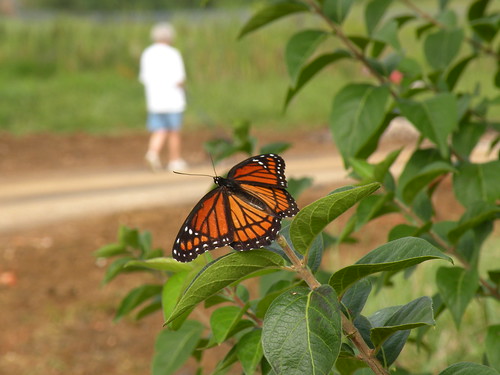
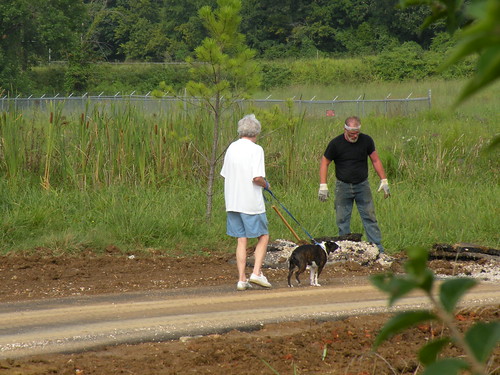
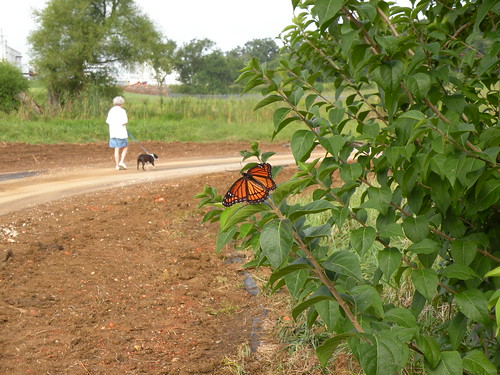
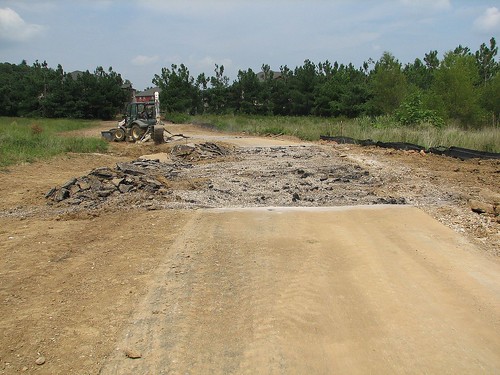
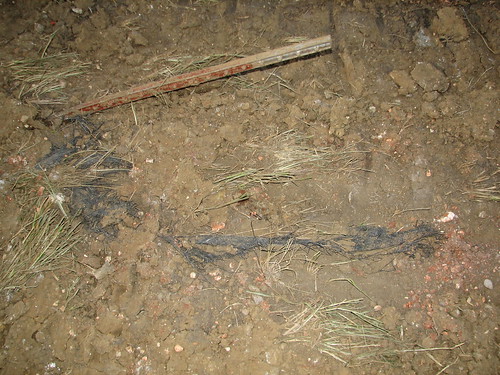
.JPG)

























